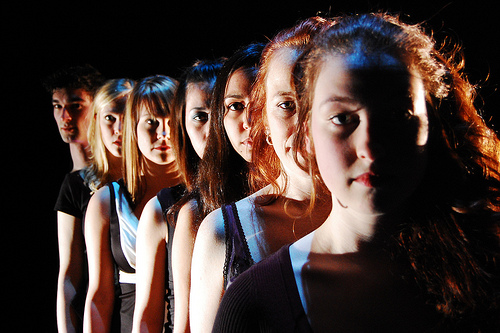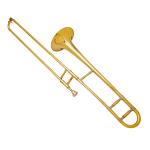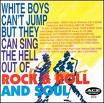 SF Playhouse‘s brilliant current production of Stephen Adly Guirgis’ Den of Thieves is my guilty pleasure of the week. I say this with some reservations as the play is hardly trash, though compared to the artsy-fartsiness of the play I saw the previous night at Berkeley Repertory Theatre by Naomi Iizuka, I feel almost guilty for enjoying myself so much at the Guirgis play.
SF Playhouse‘s brilliant current production of Stephen Adly Guirgis’ Den of Thieves is my guilty pleasure of the week. I say this with some reservations as the play is hardly trash, though compared to the artsy-fartsiness of the play I saw the previous night at Berkeley Repertory Theatre by Naomi Iizuka, I feel almost guilty for enjoying myself so much at the Guirgis play.
What SF Playhouse’s production demonstrates so beautifully is the extent to which a piece of theatre can be pure fun and also thoughtful at the same time. This is not a common outcome in my experience. The play is pretty silly – even Neil Simon would hesitate to tell such a story on stage. But it’s also got a thoughtful edge.
Concerning a failed nightclub heist by a bunch of small-time kleptomaniacs, the play is full of over-the-top characters. Some of them, like Sal, Big Tuna and Little Tuna, are textbook Italian mobsters with a twist – the sorts of wise-guys that people the middle period films of Woody Allen. The other characters are also caricatures, but they’re so interesting that their huge presence on stage is welcome. There’s Flaco, a stereotypical young hoodlum, who postures and swaggers his way through life. He’s a scrawny white kid, but he thinks of himself as Latino. Then there’s Boochie, a white girl who looks like a hooker and thinks she’s Latina. Paul is a nebbische 12-step program officer and ex-crook. His background is interesting: he’s the adopted black child from a family of Jewish bandits, known back in the day as “The Den of Thieves.” Finally we come to Maggie, a young Latina who actually is of Latin extraction. Of all the characters, she’s the least caricatured and the quietest – though as a recovering kleptomaniac, she’s also got a wild streak. She’s a welcome balancing force in the mayhem.
The theatre is small. But as large as all these characters are, they’re never overbearing. I was so involved in the story – there was hardly a moment when I didn’t completely believe in the characters thanks to the engrossing performances by every single person on stage and Susi Damilano’s pacey direction – that they could have bellowed right in my face or sat on my lap and I wouldn’t have wanted more distance from them.
The play is a lot of fun. But it also engages the brain, which is why I shouldn’t call it a guilty pleasure. Den of Thieves is not Strictly Come Dancing or Project Runway. The playwright’s subtle commentary on the nature of dishonesty, the reasons why people fall into and out of a life of crime and our deep desire as human beings to “follow the herd” have kept me thinking ever since.

 Every so often I go to the theatre and get tricked into thinking the play I’m seeing is good. Beautiful performances, slick staging and strong visual imagery can sometimes make me believe that a drama is really profound when it isn’t. It’s only after the fact — sometimes several days or even weeks after the curtain has come down — that I realize that I had been duped.
Every so often I go to the theatre and get tricked into thinking the play I’m seeing is good. Beautiful performances, slick staging and strong visual imagery can sometimes make me believe that a drama is really profound when it isn’t. It’s only after the fact — sometimes several days or even weeks after the curtain has come down — that I realize that I had been duped.
 As I do not currently work for
As I do not currently work for  One of the problems with Tim Burton’s new Alice in Wonderland film is its title. Critics have been deriding the film for all kinds of reasons such as its shock tactics and the lack of charisma of its leading lady. And yes, much of the criticism is deserved, for the film isn’t up to Burton’s usual snuff.
One of the problems with Tim Burton’s new Alice in Wonderland film is its title. Critics have been deriding the film for all kinds of reasons such as its shock tactics and the lack of charisma of its leading lady. And yes, much of the criticism is deserved, for the film isn’t up to Burton’s usual snuff.
 I am not a fan of those lists of “Top 50 Women Artists” or “Top 10 Young Conductors” or “The 20 Most Powerful Cultural Movers and Shakers” that pop up with alarming frequency in the media.
I am not a fan of those lists of “Top 50 Women Artists” or “Top 10 Young Conductors” or “The 20 Most Powerful Cultural Movers and Shakers” that pop up with alarming frequency in the media. While cycling down the coast in Kauai last week, I chanced upon an extraordinary sight. I heard the trombones before I saw them, actually. Brass scales and arpeggios caught my ears as I whooshed along, providing an unusual sonic backdrop for the palm trees, sandy beaches and ocean setting.
While cycling down the coast in Kauai last week, I chanced upon an extraordinary sight. I heard the trombones before I saw them, actually. Brass scales and arpeggios caught my ears as I whooshed along, providing an unusual sonic backdrop for the palm trees, sandy beaches and ocean setting. The weather not being all that cooperative in Hawaii last week, I ended up spending quite a bit of time trying to find fun things to do indoors. At the advice of a sweet and avuncular Michigan lawyer names John who was on Kauai vacationing with his wife, I followed a dirt track just outside the center of the town of Hanalei to hear a slack key guitar concert in a local community center given by a couple of Hawaiian old timers
The weather not being all that cooperative in Hawaii last week, I ended up spending quite a bit of time trying to find fun things to do indoors. At the advice of a sweet and avuncular Michigan lawyer names John who was on Kauai vacationing with his wife, I followed a dirt track just outside the center of the town of Hanalei to hear a slack key guitar concert in a local community center given by a couple of Hawaiian old timers You know how sometimes you look at a once-familiar word, phrase or sentence and it suddenly seems incomprehensible, like it’s written in Swahili or Urdu?
You know how sometimes you look at a once-familiar word, phrase or sentence and it suddenly seems incomprehensible, like it’s written in Swahili or Urdu?
 Here’s a very quick roundup of some stuff I experienced on my trip to New York over the past few days:
Here’s a very quick roundup of some stuff I experienced on my trip to New York over the past few days: It’s a common assumption that if you’re a truly great singer, you can sing most anything. But this assumption of course is false. There are amazing lyrical tenors who can’t do Wagner. And incredible jazz singers who can’t sing folk music. For many experts, fach is everything and knowing your parameters as a vocalist is the best way to become excellent.
It’s a common assumption that if you’re a truly great singer, you can sing most anything. But this assumption of course is false. There are amazing lyrical tenors who can’t do Wagner. And incredible jazz singers who can’t sing folk music. For many experts, fach is everything and knowing your parameters as a vocalist is the best way to become excellent.